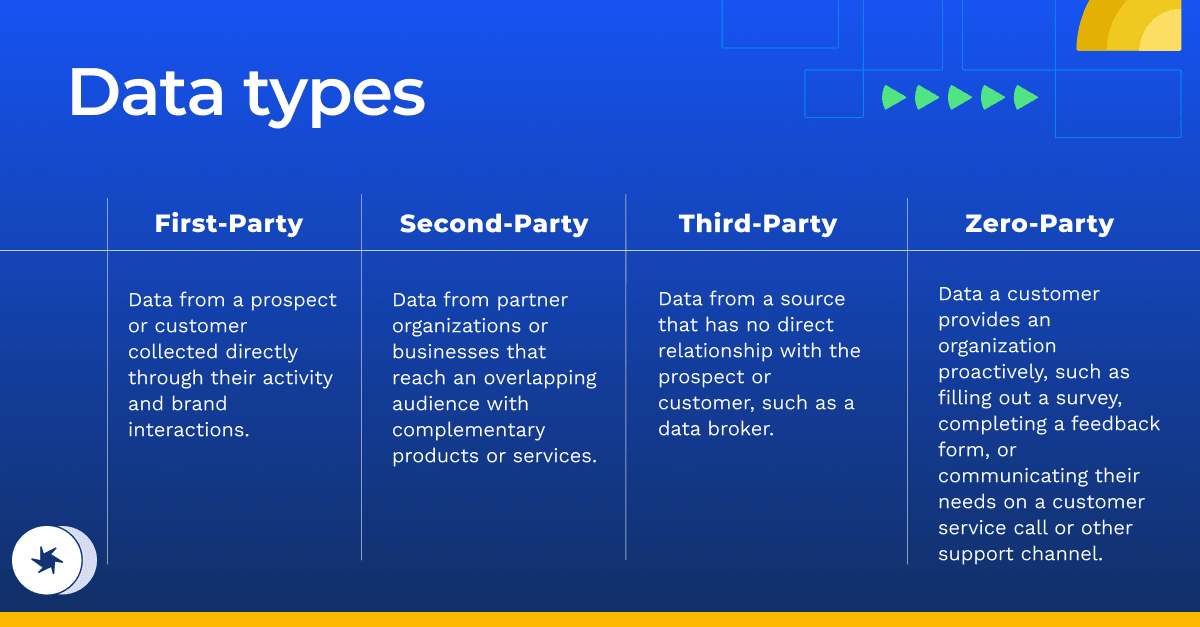First-party data examples
1P data collection and activation are essential for organizations to optimize the customer experience. A first-party data strategy can help marketing teams accomplish a range of goals, spanning new customer acquisition, increasing customer lifetime value, and reducing churn.
Retail 1P data example
Retail loyalty programs provide a solid foundation for 1P data collection. When customers create an account with an organization, their purchases and website behavior can be easily tracked and associated with them. This data helps marketers personalize their outreach to this customer, which can include sending personalized product recommendations and highlighting location-specific offerings.
Financial services 1P data example
A financial institution can collect information about how customers typically use their online services, including which services are most popular with specific customers. This data allows the institution to deliver proactive customer reminders and targeted cross-sells to promote complementary services (like offering a bonus for new checking accounts opened by existing credit card holders).
Media 1P data data example
Streaming providers can leverage customer watching and browsing history to tailor their streaming experience and deliver recommendations based on the genres or categories they watch most frequently. Information such as a customer’s address or IP address could also suggest if there are multiple profiles under one household, which could create an opportunity to promote a discounted family plan.




